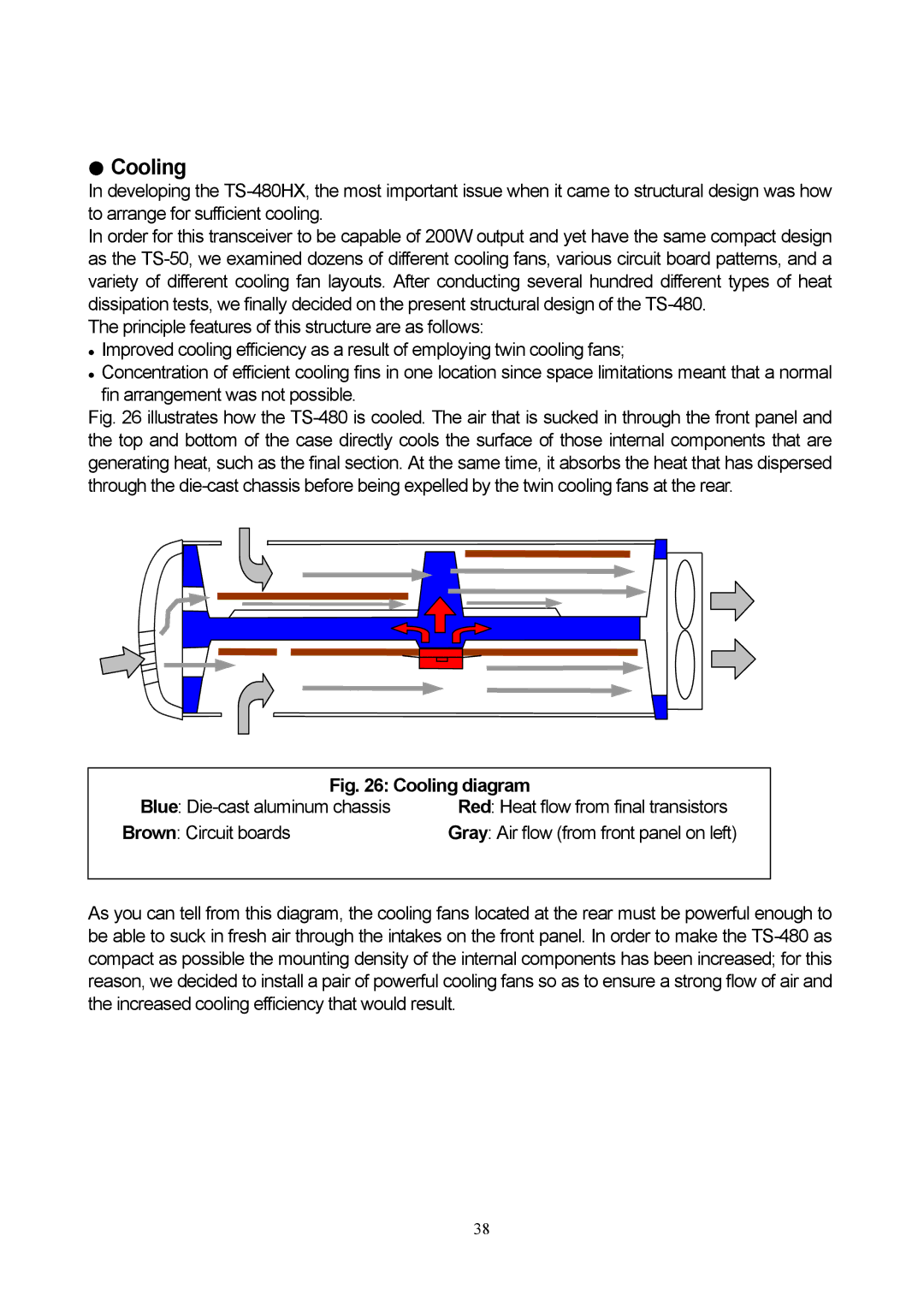
●Cooling
In developing the
In order for this transceiver to be capable of 200W output and yet have the same compact design as the
The principle features of this structure are as follows:
Improved cooling efficiency as a result of employing twin cooling fans;
Concentration of efficient cooling fins in one location since space limitations meant that a normal fin arrangement was not possible.
Fig. 26 illustrates how the TS-480 is cooled. The air that is sucked in through the front panel and the top and bottom of the case directly cools the surface of those internal components that are generating heat, such as the final section. At the same time, it absorbs the heat that has dispersed through the die-cast chassis before being expelled by the twin cooling fans at the rear.
Fig. 26: Cooling diagram
Blue: | Red: Heat flow from final transistors |
Brown: Circuit boards | Gray: Air flow (from front panel on left) |
As you can tell from this diagram, the cooling fans located at the rear must be powerful enough to be able to suck in fresh air through the intakes on the front panel. In order to make the
38
